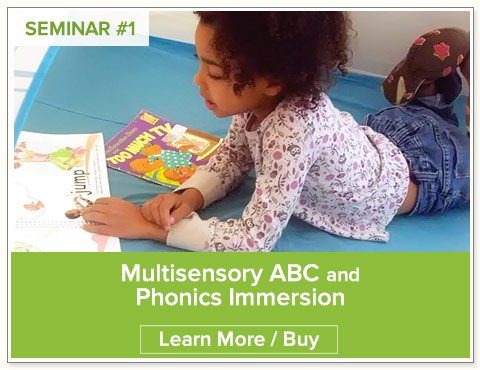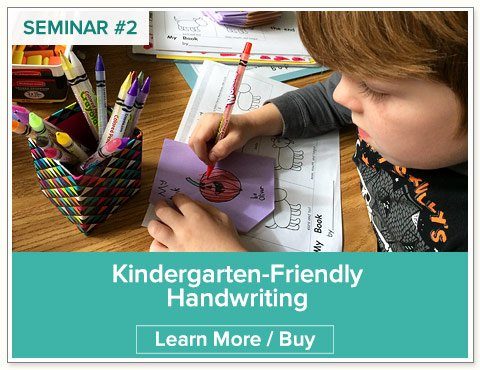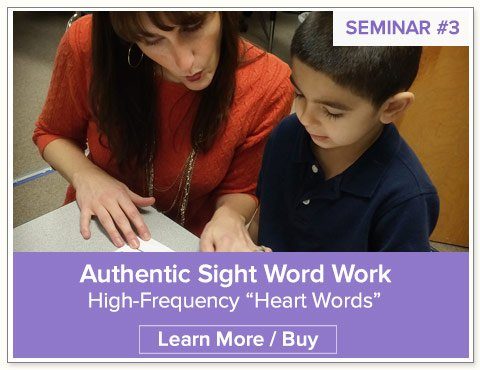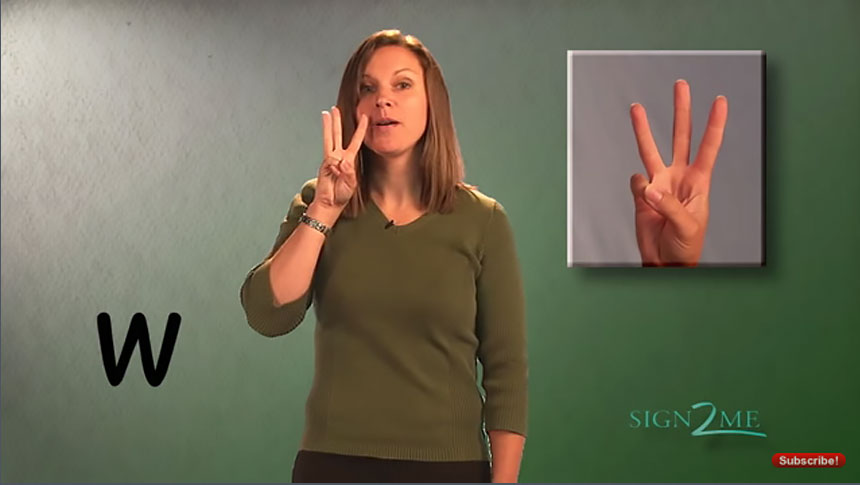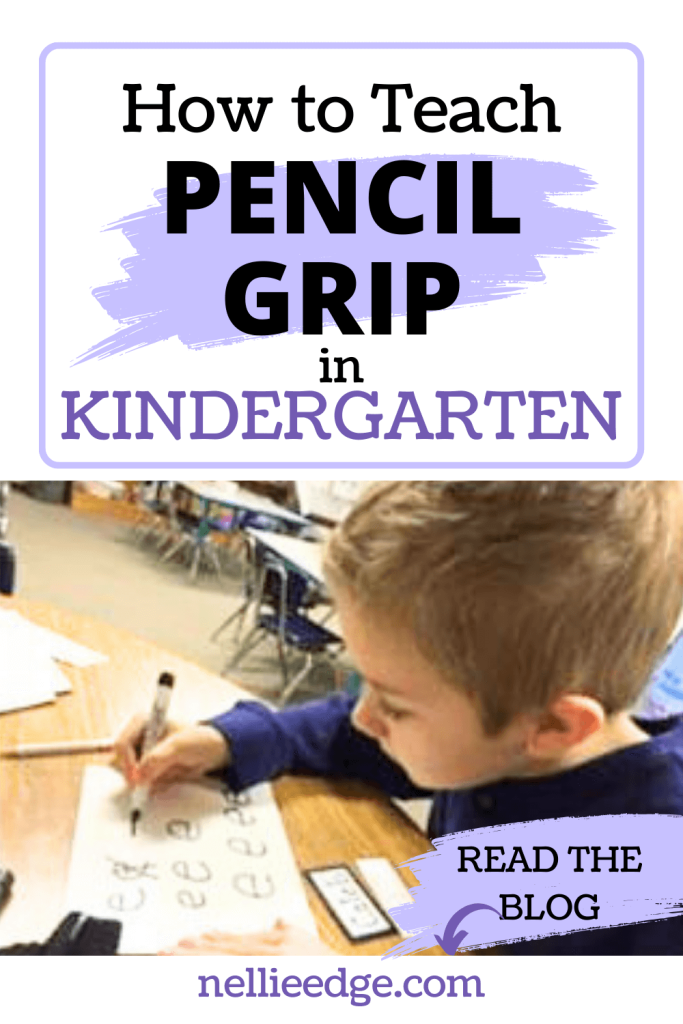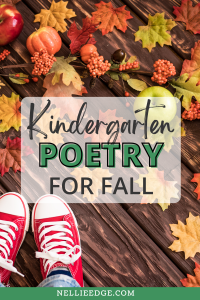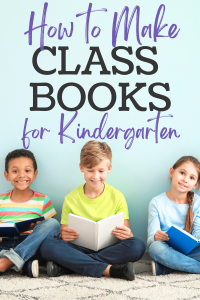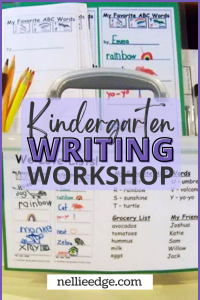When kindergarteners enter the classroom, they begin building the foundation for the rest of their lives. So, teachers often get started on a skill essential for all learning: handwriting! This includes teaching a good handwriting grip and name-writing. These skills take lots of practice, so getting started during the first weeks of school is key! Thankfully, these ten tips for teaching handwriting grip will help kindergartners build a strong foundation.

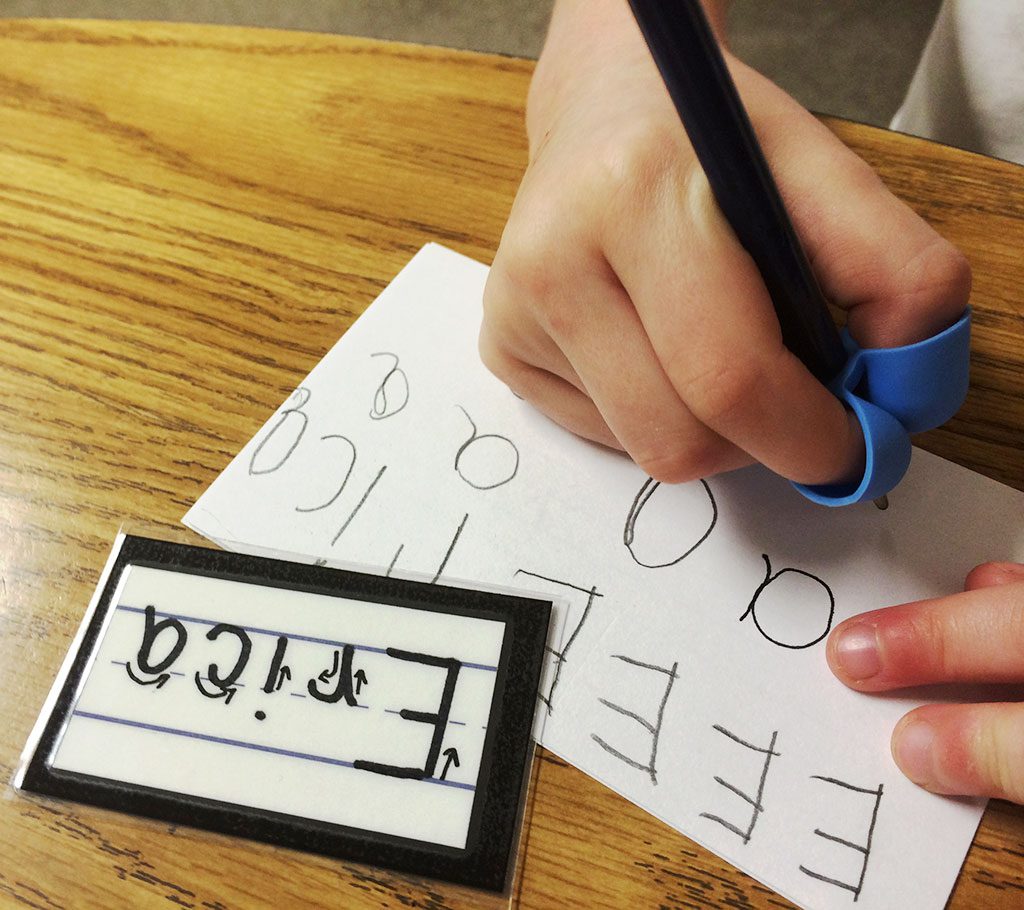
Tip #1: Determine a child’s dominant hand
Begin by asking parents. You can also watch the child when playing with manipulative toys. If you notice which hand the child uses to pick up crayons or small pencils, you can help determine the dominant hand. Honestly, it is so important that parents understand that a good pencil grip will help the child write better and enjoy the writing process! So, be sure to communicate with your parents! Additionally, share information to support left-handed writers. If you have high expectations for a good handwriting grip, there will be a great school-home connection to build this essential skill.
Check out Nellie Edge’s “Kindergarten-Friendly Handwriting Matters” for more guidance on ten tips on teaching handwriting grip.
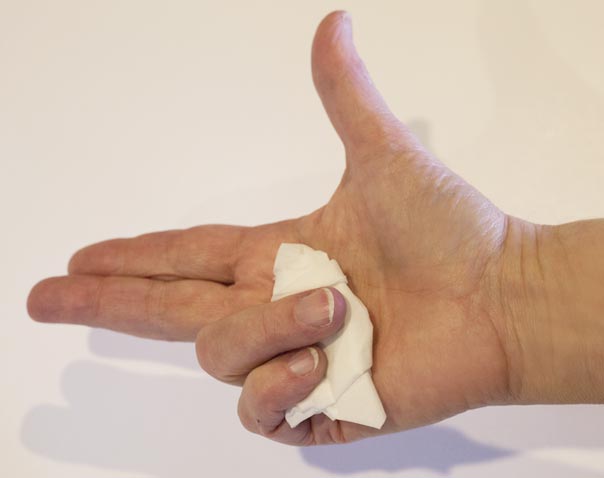
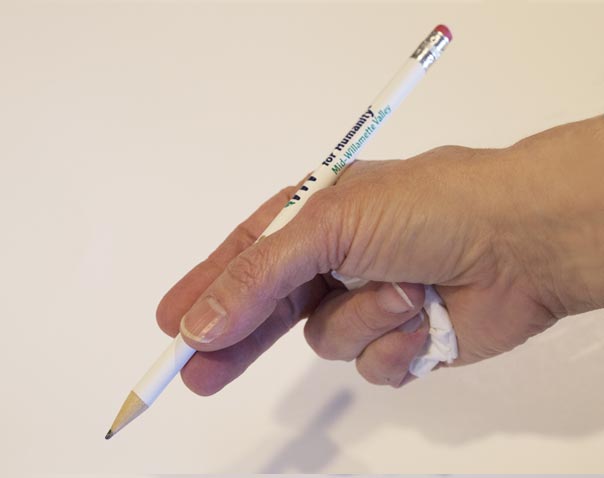
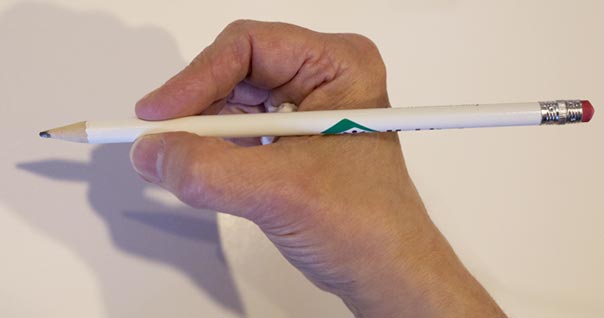
Tip #2: Pencil Grip Trick
Ask the children who are still developing efficient grips to hold a half tissue, a cotton ball, or even a marble under three fingers. This frees the pencil-holding fingers to do their job. Then, place the child’s fingers on the pencil. This is such a neat trick to help students!
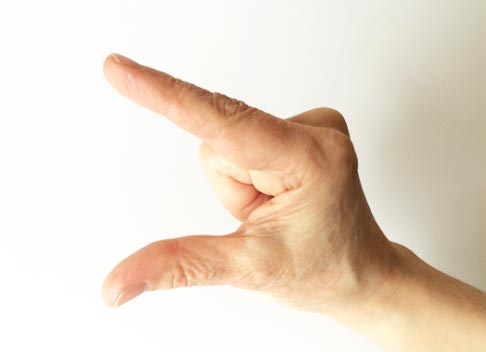
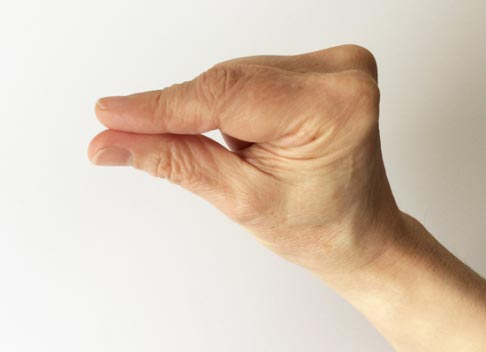

Tip #3: Teach “Duck Talk”
Teach “duck talk” with the thumb and pointer finger. Afer fingers are in the right position, tell the child to put the pencil in the duck’s mouth. Students will love knowing that’s how we hold a pencil in kindergarten! (We do not know the original online source for this clever strategy.)
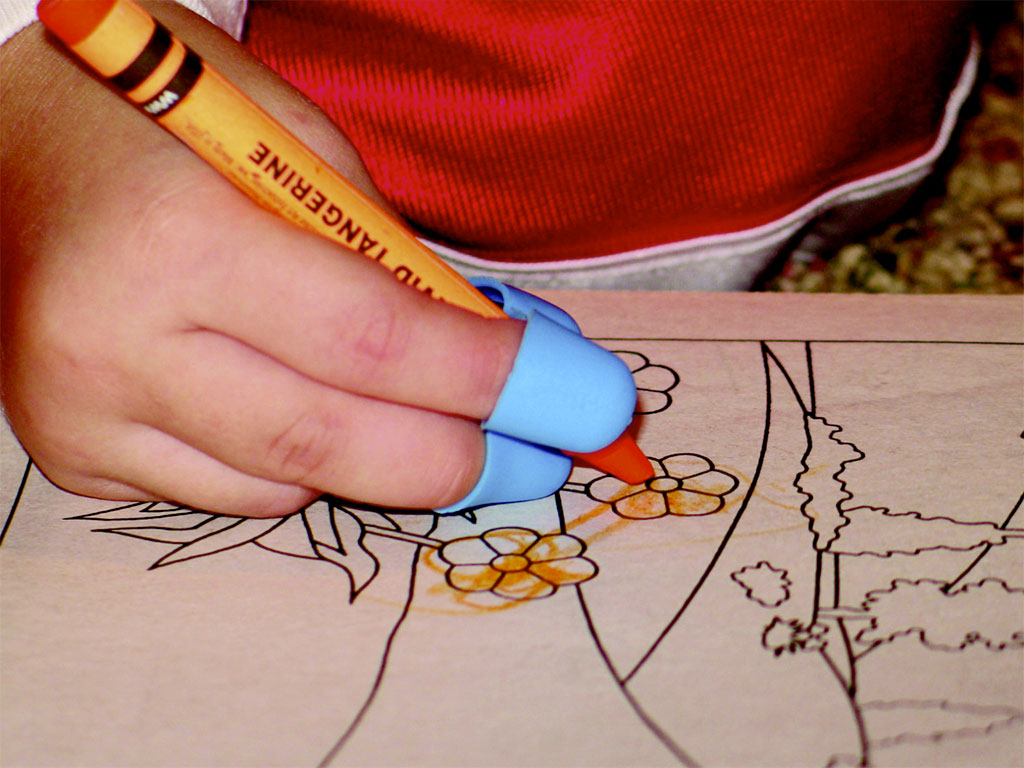
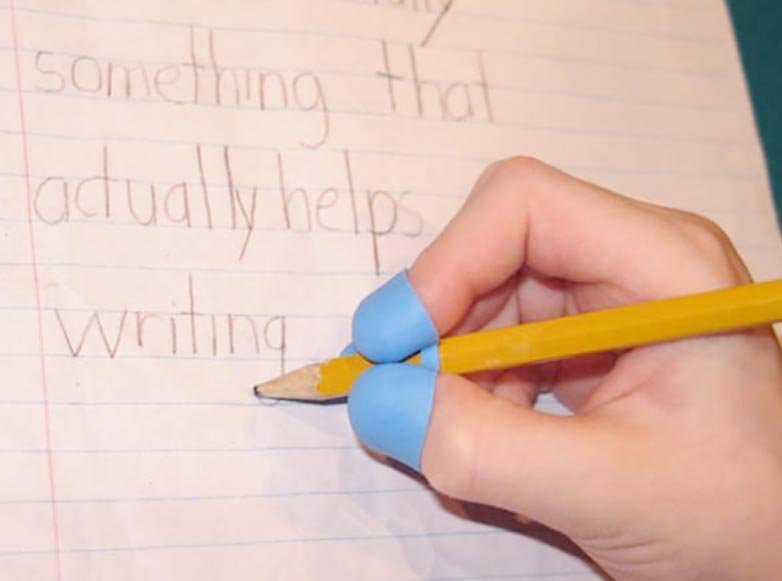
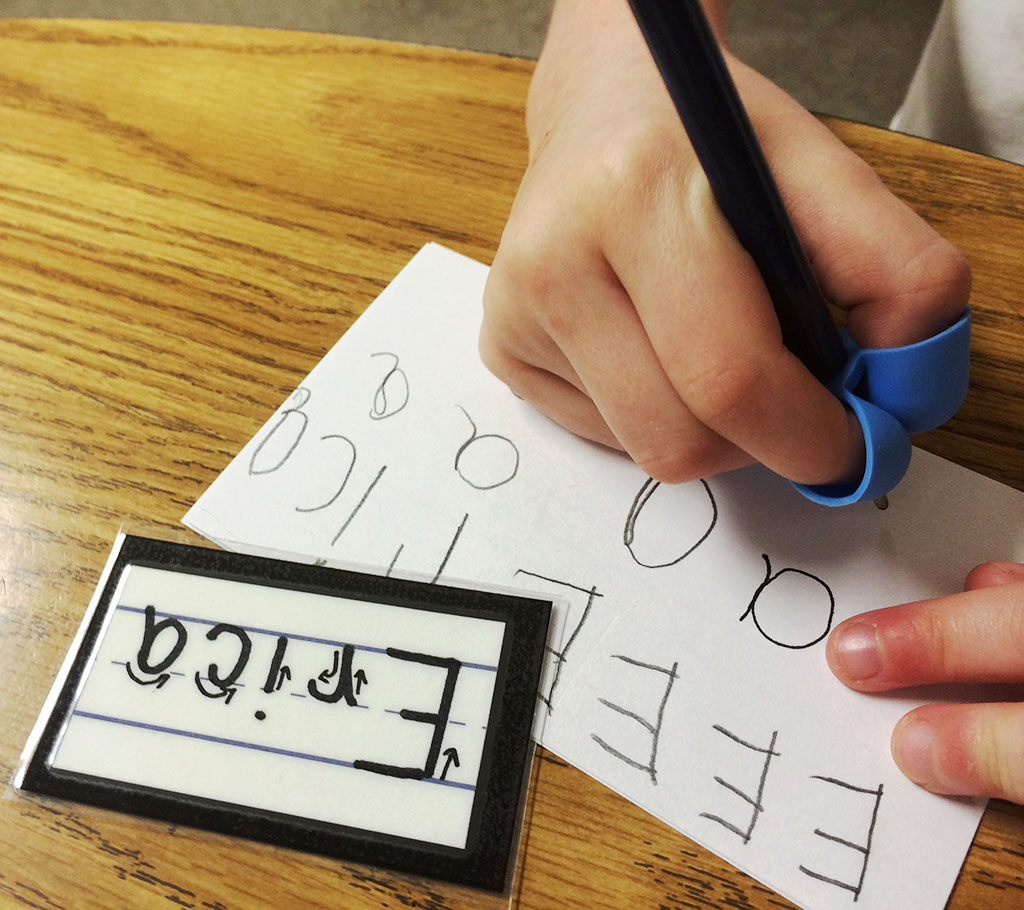
C.L.A.W. photos from www.thepencilgrip.com
Tip #4: Grip Supports
Have a set of 8-10 finger grip supports available for your young writers. We like to use the C.L.A.W. Ask all of the children at the writing table to use one. Today, we get to write our names using a C.L.A.W. This holds fingers in a good handwriting position. The C.L.A.W. will help our fingers remember how to hold a pencil.
Tip #5: Teaching Handwriting Parent Letter
Give families the parent handwriting letter with photos showing the
developmental stages of pencil grip during Spring Kindergarten Registration.
Ask for their support at home with pencil grip and name writing. Parents (and even preschool teachers) are often unaware of the developmental sequence of pencil grip dexterity. Download Nellie Edge Parents as Partners Letters:
6. Fingerspell with children throughout the day and encourage parents to reinforce fingerspelling at home. Expect firm, accurate fingerspelling shapes. For example, practice “l-o-v-e” (and other “heart words”) and “o” and “k” every day! Remind children: We fingerspell every day to help our brain remember letters, sounds, and words and to build our finger-writing muscles.
- Learn to fingerspell: Access the free instructional videos on the ABC Phonics page.
- Use fingerspelling during transition times and while children are lining up.
All children can become fingerspelling experts and be honored in an “ABC Phonics Experts Book” with photos of them fingerspelling.
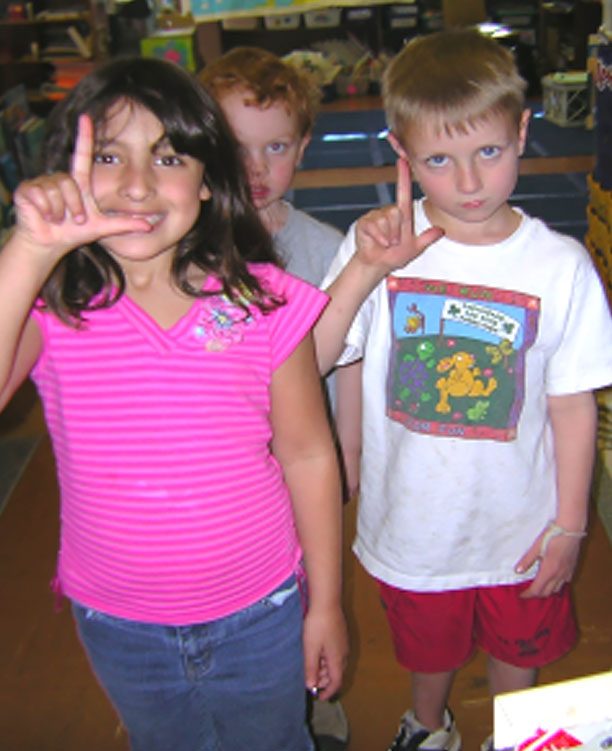
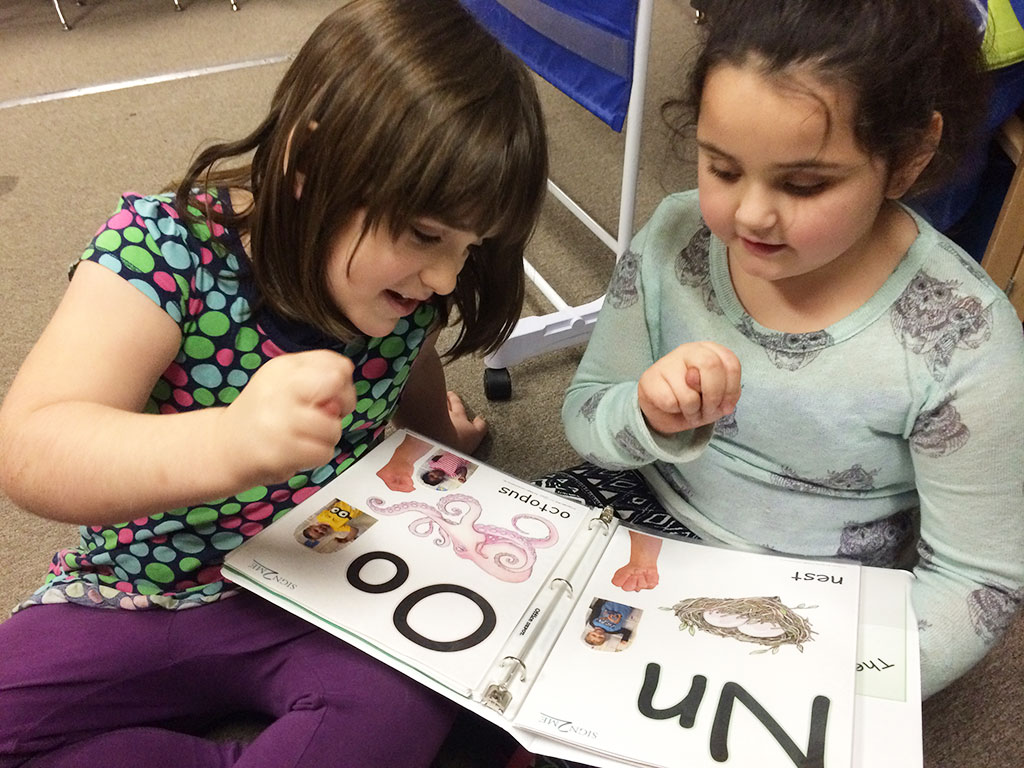
Tip #7: Handwriting Tools
At the beginning of the year, offer children short pencils and short triangular crayons. Honestly, this is such a helpful step when using the ten tips for teaching handwriting grip! For children with fine motor skill delays, occupational therapists recommend breaking thick crayons into small chunks. This ensures that the only way a child can hold them is by using a tripod grip.

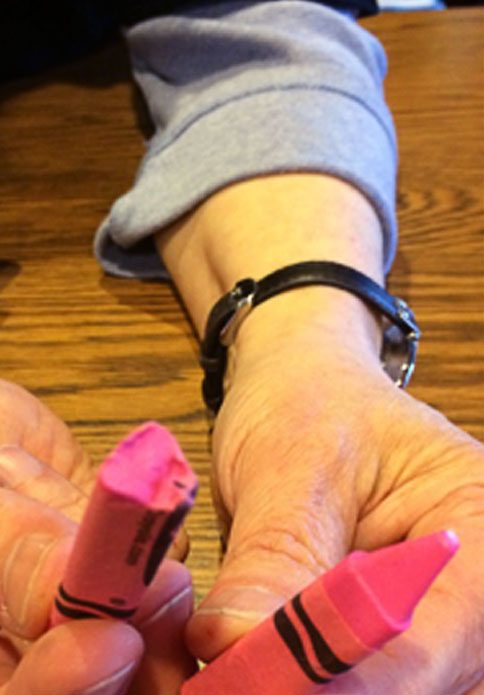

Tip #8: Using Scissors
Encourage the use of scissors at home and at school. Correctly using scissors develops hand and finger strength for writing.
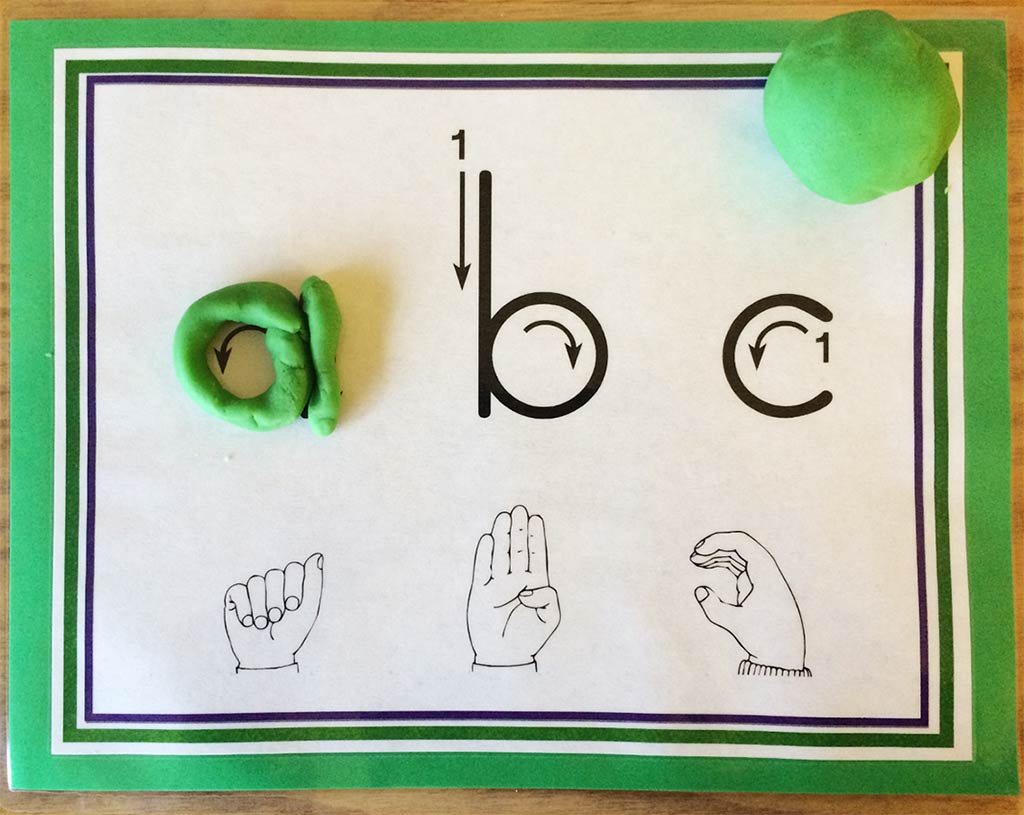
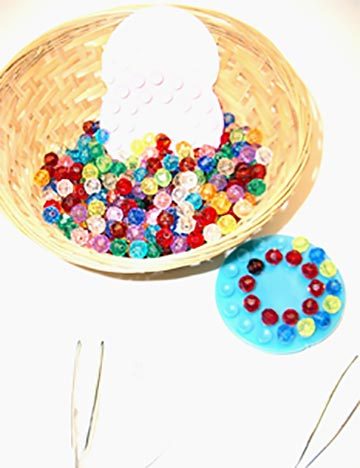
Tip #9: Fine Motor Skills
Provide a variety of fine motor table toys for children to manipulate. Use toys that require a two-finger “pincher” grasp.
- For example, children can use tweezers to place beads in designs on suction cups. This provides great training for holding pencils.
ABC Play Dough Fingerspelling Mats have become an especially useful social learning and fine motor tool. Play Dough Mats and ABC Phonics Family Reference Charts are FREE downloads at the Nellie Edge TPT store. Notice you can add images from the ABC Phonics Family Reference Chart for additional 
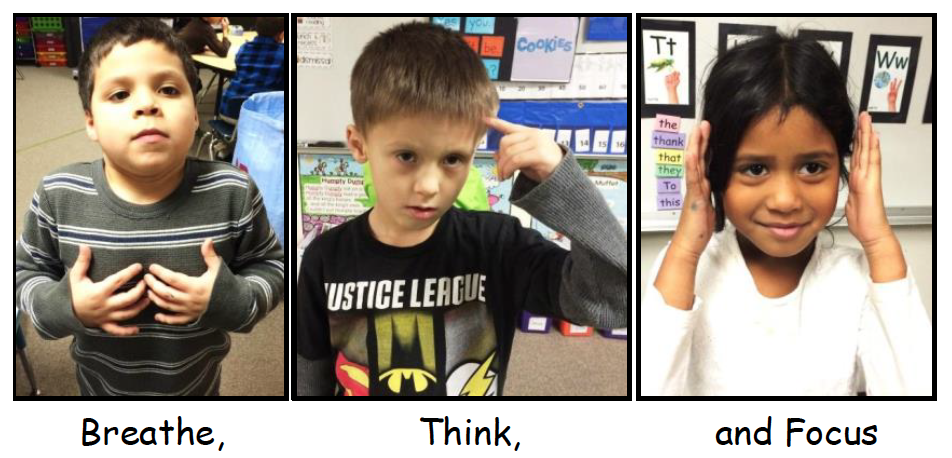
Tip #10: Understanding Pencil Grip
Let children and parents know why we care about pencil grip. Honestly, they need to understand the benefits of an efficient pencil grasp! By having an understanding, they are more likely to help practice at home.
Here are some great discussion points when using the ten tips for teaching handwriting grip!
- Kindergarten friends, we want to hold a pencil with a good finger grip to write better and faster. This also helps make sure our finger muscles won’t get tired.
- You can see what you are writing when you hold your pencil correctly.
- You get to think, focus, and work hard to learn new skills: you can do it!
- You’ll practice writing your name every day at home and school using correct kindergarten letter formation and pencil grip. Soon, it will be automatic! You won’t even have to think about it… and you’ll be an expert!
To become name-writing experts, we must think, focus, use a good pencil grip, and learn to form our letters efficiently. Thankfully, these ten tips for teaching handwriting grip will help all kindergartners build a solid foundation for life!
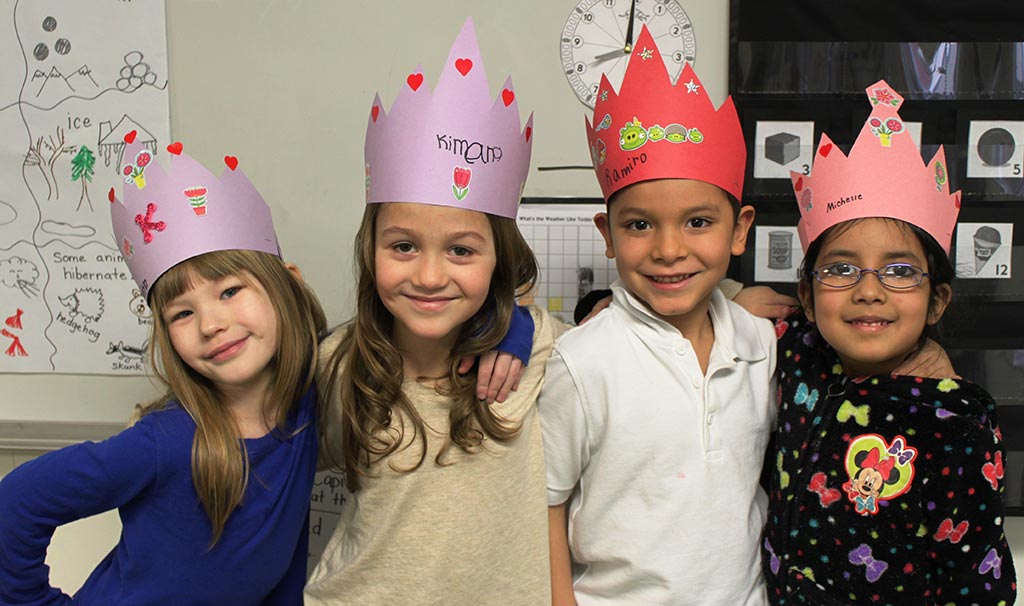
Honestly, an efficient handwriting grip is essential to the writing process. Kindergarten writers will love to write and illustrate their own stories and books as they build on their foundation!

Learn More About Kindergarten-Friendly Handwriting
Anchor chart from “Essential Kindergarten Handwriting Lessons”
This anchor chart is from “Essential Kindergarten Handwriting Lessons.”— This is one part of our Kindergarten Handwriting Program bundle that has proven successful with diverse kindergarten learners.
Enjoy FREE Nellie Edge TPT Handwriting and Fingerspelling Resources

Authentic K-1 Handwriting: Build Stamina for Writing Workshop
Integrates ABC Phonics, writing-to-read sentences, drawing, and fingerspelling.
Download FREE eBook: What Does Kindergarten-Friendly Handwriting Look Like?

Your colleagues evaluate this program:
“These lessons are a game changer for my kinders. So engaging and I’ve seen so much improvement. Wish I would have started these in the Fall!” -Chelsea G.
“This was very helpful to help teach writing. I homeschool my granddaughter and this was a perfect resource with little prep time.” -Tamara R.
“Now we ..always start our letters at the top! 🙂 Thank you for another great program.” -Chantelle O.
“I had been wanting to get my hands on this resource for a while. So glad it finally came in a digital format. I have used Nellie Edge’s resources to teach the alphabet, letter names and sounds. This was a wonderful match up product to reinforce teaching and learning.” -Educom K.
“I love everything Nellie Edge! She uses best practices! I love, love, love! Ever since I began using her program, I’ve seen a huge increase in my students learning.” -Jessica H.
“Really great for step by step writing for kids.” -Sara B.
“Great activities for my first graders. I used it at the beginning of the year for review.” -Andi S.
If you have already purchased Nellie Edge Online Seminar (NEOS) #2, Kindergarten-Friendly Handwriting Matters!, you will have FREE access to these handwriting resources.
NEOS #1, Multisensory ABC and Phonics Immersion and NEOS #3, Authentic Sight Word Work wrap around our kindergarten-friendly handwriting. Learn More
Take a MasterClass in Kindergarten Writing Foundations
Summer Distance Learning Special: All 3 Online Seminars $79 (Save $58!) Credits available.
